C.S. Harris's Blog, page 7
August 10, 2015
Where Do Your Ideas Come From?
Where do you get your ideas? This is something writers hear a lot, and for reasons I'll never understand, a surprising number of authors find it an annoying question. I don't.
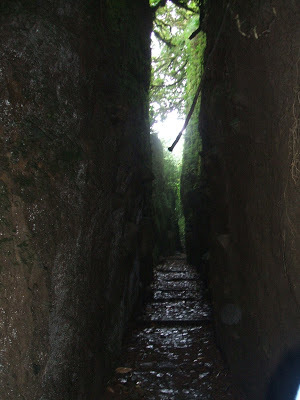
Most of my ideas come while doing research for another book. The core idea for Why Mermaids Sing came to me when I was researching shipwrecks for Beyond Sunrise, my last romantic adventure. The mystery surrounding the death of the Dauphin, the core idea for Why Kings Confess, has fascinated me since I was a doctoral student in the 80s. Even songs can be inspiring: the idea for When Maidens Mourn came from years of doing my morning yoga to Loreena McKennitt's lovely version of The Lady of Shalott. But other sources are less easy to pinpoint. The idea of having Paul Gibson buy the body of a man who had been murdered--the inspiration for Where Shadows Dance--came out of the blue one night while I was taking a bath. And some ideas are such accretions that it's impossible to say where they came from.
Because I have a lousy memory, over time I tend to forget the details of the process. Which is why I was excited when, in the midst of a mammoth cleanup of old emails over the weekend, I came upon a letter I'd written to my daughter in the autumn of 2004. She was attending university in Egypt at the time, and I was working on the proposal for When Gods Die. Because it talks about where the idea for both Gods and a certain necklace came from, I thought those of you who've read the book (if you haven't, there are spoilers) might find it interesting. Here is the relevant section:
I have finished the draft of my proposal--synopsis and the first 4 chapters. I will sit on it for a week, then polish it some more and send it off. For some reason adding the bit about the necklace really fired me up. It's so funny that I didn't think of it before. The whole backstory behind the murder is a conspiracy to put the Stuart heir (for my purposes, a Savoy prince) on the throne. The murder victim (who was not a part of the conspiracy but was in love with one of the conspirators) has always been fascinated by the Stuarts because she's a descendent of James II and his Welsh mistress. Sebastian agrees to look into all of this because she is found wearing a necklace that his mother was wearing the day she was supposidly lost at sea. When I first came up with the idea, I was going to have it just be a necklace. Then when I was writing the scene, I was wracking my brain, trying to figure out how to make it believable that the Machievellian Lord Jarvis would have recognized a simple necklace in order to be able to convince Sebastian to help. I got as far as having Sebastian kneeling beside the body and reaching for the necklace, and I'm still thinking, What does this necklace look like? Then this lightbulb goes off in my head, and suddenly I'm describing Polly's necklace and the legend about it growing warm and choosing its next guardian. I put in Druid priestesses and links to James II, and it added this wonderful whole new dimention to the book that wasn't there before and that gives it a fantastic lift. Now, instead of just being a necklace, it's this very special, mysterious necklace that is going to weave its way into future books, too. It's so bizarre I never thought of it before, since Goditha Price was the inspiration for the Welsh mistress. Only problem is, I can't remember what the design was called. Tri-what?
I should probably explain that the "Polly" I'm referring to was a distant, 103 year-old-cousin. She had in her possession a necklace given to one of our common ancestors by his mother, Mary, an illegitimate daughter of the prince who eventually became James II and a lady-in-waiting to the Queen named Goditha Price. When Mary's son Edward was exiled from Scotland after a Jacobite uprising, she gave him the necklace along with a heartrending letter that Polly still preserved (She also still had his sword! How neat is that?). The legend of the necklace growing warm and choosing its next owner, as well as its supposed ability to bring long life, was explained in Mary's letter to her son. She says it's why she gave it to him--to protect him. The funny part of this snippet from my email to my daughter is that it shows just how much of a spur-of-the-moment afterthought weaving this tale into the series was. And I had totally forgotten that.
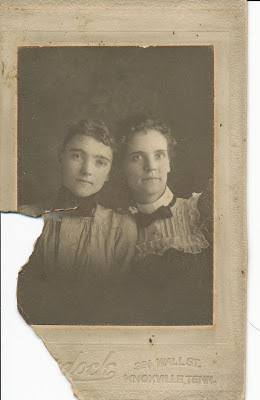
Incidentally, although history records that Goditha was James II's mistress (Samuel Pepys rather nastily refers to her as "fat Price"), the birth of her son is not officially recorded, and I've received some ugly "you made that up" pushback on-line for telling this story. However, in addition to the sword, necklace, and letter, Polly also had in her possession ancient pages cut from a beautiful, gold-leafed, illuminated bible that had Edward's genealogy going back on both sides. I've also been involved in genetic research for porphyria, and my version of that nasty blood disorder is extraordinarily rare and traces back to the Stuarts. It's all enough to convince me the story of Mary's parentage is true and I frankly don't care if anyone else believes it. I've told the tale only because it felt wrong to let people think I was clever enough to make up the necklace legend when all I did was borrow it. Apart from which, if I wanted to invent grand genetic ties, I'd pick people I admired more than a woman who has gone down in history as "fat Price," a guy who got his head cut off, and another guy who lost his throne! What a heritage.

Most of my ideas come while doing research for another book. The core idea for Why Mermaids Sing came to me when I was researching shipwrecks for Beyond Sunrise, my last romantic adventure. The mystery surrounding the death of the Dauphin, the core idea for Why Kings Confess, has fascinated me since I was a doctoral student in the 80s. Even songs can be inspiring: the idea for When Maidens Mourn came from years of doing my morning yoga to Loreena McKennitt's lovely version of The Lady of Shalott. But other sources are less easy to pinpoint. The idea of having Paul Gibson buy the body of a man who had been murdered--the inspiration for Where Shadows Dance--came out of the blue one night while I was taking a bath. And some ideas are such accretions that it's impossible to say where they came from.
Because I have a lousy memory, over time I tend to forget the details of the process. Which is why I was excited when, in the midst of a mammoth cleanup of old emails over the weekend, I came upon a letter I'd written to my daughter in the autumn of 2004. She was attending university in Egypt at the time, and I was working on the proposal for When Gods Die. Because it talks about where the idea for both Gods and a certain necklace came from, I thought those of you who've read the book (if you haven't, there are spoilers) might find it interesting. Here is the relevant section:
I have finished the draft of my proposal--synopsis and the first 4 chapters. I will sit on it for a week, then polish it some more and send it off. For some reason adding the bit about the necklace really fired me up. It's so funny that I didn't think of it before. The whole backstory behind the murder is a conspiracy to put the Stuart heir (for my purposes, a Savoy prince) on the throne. The murder victim (who was not a part of the conspiracy but was in love with one of the conspirators) has always been fascinated by the Stuarts because she's a descendent of James II and his Welsh mistress. Sebastian agrees to look into all of this because she is found wearing a necklace that his mother was wearing the day she was supposidly lost at sea. When I first came up with the idea, I was going to have it just be a necklace. Then when I was writing the scene, I was wracking my brain, trying to figure out how to make it believable that the Machievellian Lord Jarvis would have recognized a simple necklace in order to be able to convince Sebastian to help. I got as far as having Sebastian kneeling beside the body and reaching for the necklace, and I'm still thinking, What does this necklace look like? Then this lightbulb goes off in my head, and suddenly I'm describing Polly's necklace and the legend about it growing warm and choosing its next guardian. I put in Druid priestesses and links to James II, and it added this wonderful whole new dimention to the book that wasn't there before and that gives it a fantastic lift. Now, instead of just being a necklace, it's this very special, mysterious necklace that is going to weave its way into future books, too. It's so bizarre I never thought of it before, since Goditha Price was the inspiration for the Welsh mistress. Only problem is, I can't remember what the design was called. Tri-what?
I should probably explain that the "Polly" I'm referring to was a distant, 103 year-old-cousin. She had in her possession a necklace given to one of our common ancestors by his mother, Mary, an illegitimate daughter of the prince who eventually became James II and a lady-in-waiting to the Queen named Goditha Price. When Mary's son Edward was exiled from Scotland after a Jacobite uprising, she gave him the necklace along with a heartrending letter that Polly still preserved (She also still had his sword! How neat is that?). The legend of the necklace growing warm and choosing its next owner, as well as its supposed ability to bring long life, was explained in Mary's letter to her son. She says it's why she gave it to him--to protect him. The funny part of this snippet from my email to my daughter is that it shows just how much of a spur-of-the-moment afterthought weaving this tale into the series was. And I had totally forgotten that.

Incidentally, although history records that Goditha was James II's mistress (Samuel Pepys rather nastily refers to her as "fat Price"), the birth of her son is not officially recorded, and I've received some ugly "you made that up" pushback on-line for telling this story. However, in addition to the sword, necklace, and letter, Polly also had in her possession ancient pages cut from a beautiful, gold-leafed, illuminated bible that had Edward's genealogy going back on both sides. I've also been involved in genetic research for porphyria, and my version of that nasty blood disorder is extraordinarily rare and traces back to the Stuarts. It's all enough to convince me the story of Mary's parentage is true and I frankly don't care if anyone else believes it. I've told the tale only because it felt wrong to let people think I was clever enough to make up the necklace legend when all I did was borrow it. Apart from which, if I wanted to invent grand genetic ties, I'd pick people I admired more than a woman who has gone down in history as "fat Price," a guy who got his head cut off, and another guy who lost his throne! What a heritage.
Published on August 10, 2015 10:51
August 4, 2015
Don't Worry, she said; I'll Find Homes for Them, she said...

Six years ago today, my daughter called on her way home from hiking in a national park to ask if I knew anything about cats having kittens. When I said, WHY? she admitted that an abandoned pregnant cat she'd rescued from the park was at that moment having kittens in the backseat of her car, barreling down the Interstate toward New Orleans.
My first thought was, Oh, God; I'm going to get stuck with them.
"Don't worry," she said. "I'll find homes for them," she said.

I guess I should be grateful her then-boyfriend took the mama cat and one of the four kittens when they amicably went their separate ways, otherwise I'd have all five. As it is....


Happy Birthday, Peanut, Roscoe, and Whiskies!
Published on August 04, 2015 11:27
July 28, 2015
The London of Sebastian St. Cyr: the Roman Walls
It's actually rather amazing how much of London's old Roman wall still stands today. Here's the same bastion near St. Giles Cripplegate, first in Sebastian's time, then today:
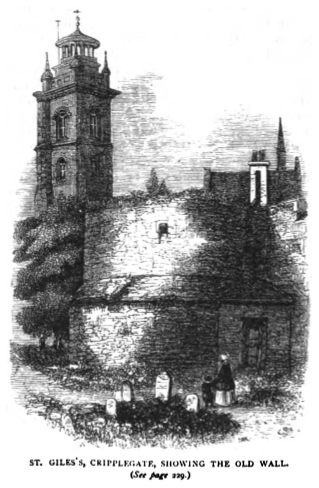

Built largely during the third and fourth centuries, the wall was once two miles long, six to nine feet wide, and about twenty feet high. A number of gates in the old Roman wall--such as Ludgate, Newgaate, Bishopsgate, and Aldgate--are familiar to us because they continued to function as city gates down into medieval times and are now remembered as the names of major roads. Once upon a time, the boundaries of the City of London coincided with the old Roman wall. And even though that changed as the City expanded westward during the medieval period, the walls remained in use for over a thousand years. It was only in the eighteenth and nineteenth centuries that the demolition of the wall began.

Much of what we see today survived because it had been incorporated into later buildings and only became visible after the Luftwaffe carried out their rather drastic urban renewal project during WWII. When the Georgian and Victorian buildings collapsed, the parts formed by the old wall remained standing, and fortunately someone thought to preserve some of those sections.

Unfortunately, much of what is left today lies in a part of London I personally dislike, namely the Barbican, which in my humble opinion is a particularly hideous example of mid-twentieth century architecture and city planning (apologies to anyone who likes it!) It's also difficult to walk around because of the way it's laid out, making it enormously frustrating simply to figure out how to get down to St. Giles Cripplegate. There's a "London Roman Wall Walk" that was laid out years ago, but locked gates now defeat following it very far. Which is a shame, because these ruins are lovely, and most people who visit London only glimpse the less-impressive sections of the Roman wall near the Museum of London and Tower Hill.



Built largely during the third and fourth centuries, the wall was once two miles long, six to nine feet wide, and about twenty feet high. A number of gates in the old Roman wall--such as Ludgate, Newgaate, Bishopsgate, and Aldgate--are familiar to us because they continued to function as city gates down into medieval times and are now remembered as the names of major roads. Once upon a time, the boundaries of the City of London coincided with the old Roman wall. And even though that changed as the City expanded westward during the medieval period, the walls remained in use for over a thousand years. It was only in the eighteenth and nineteenth centuries that the demolition of the wall began.

Much of what we see today survived because it had been incorporated into later buildings and only became visible after the Luftwaffe carried out their rather drastic urban renewal project during WWII. When the Georgian and Victorian buildings collapsed, the parts formed by the old wall remained standing, and fortunately someone thought to preserve some of those sections.

Unfortunately, much of what is left today lies in a part of London I personally dislike, namely the Barbican, which in my humble opinion is a particularly hideous example of mid-twentieth century architecture and city planning (apologies to anyone who likes it!) It's also difficult to walk around because of the way it's laid out, making it enormously frustrating simply to figure out how to get down to St. Giles Cripplegate. There's a "London Roman Wall Walk" that was laid out years ago, but locked gates now defeat following it very far. Which is a shame, because these ruins are lovely, and most people who visit London only glimpse the less-impressive sections of the Roman wall near the Museum of London and Tower Hill.

Published on July 28, 2015 10:14
July 18, 2015
The London of Sebastian St. Cyr: Guildhall and St. Paul's, then and now
These "then and now" comparisons are kinda fun. The first is London's Guildhall, a 15th century great hall still used as the ceremonial center of the City of London.


And this, of course, is St. Paul's Cathedral:




And this, of course, is St. Paul's Cathedral:


Published on July 18, 2015 14:42
July 13, 2015
The ebook for WHY KINGS CONFESS is on sale from today until July 25th!
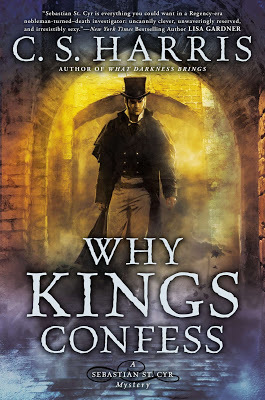
Apple is doing a special promotion for WHY KINGS CONFESS this month. From now until July 25th, you can download the ebook for just $3.99. (I assume this is just in the States, but I honestly don't know for certain.) The link is here.
And because everyone watches their competition and matches prices, it's also now available for $3.99 at Amazon.com here.
For Nook users, the Barnes and Noble link is here.
So if you have a friend who's been wanting to try the series, of if you normally collect hardcovers/mass market and you've been wanting to add the ebooks, here's a chance to get a good deal.
Published on July 13, 2015 11:42
Blogger Issues
My blog is having issues. My template was old and no longer supported and upgrading it is giving me fits. Stand by. All will eventually be fixed.
I keep telling myself this....
UPDATE: Still not finished, but I hope this looks okay to most of you now. The header will eventually be changed to match my new website, which is coming soon.
Or eventually.
I keep telling myself this....
UPDATE: Still not finished, but I hope this looks okay to most of you now. The header will eventually be changed to match my new website, which is coming soon.
Or eventually.
Published on July 13, 2015 09:02
July 6, 2015
Visiting Camlet Moat

Of all the places Danielle and I planned to visit while we were in London, Camlet Moat--the site of so much of When Maidens Mourn--excited me perhaps more than anything else. I couldn't classify going there as research since the book was written long ago. I suppose in a sense it was something of a pilgrimage.

Believe it or not, the Piccadilly Line runs all the way out to Cockfosters, so it is possible to get there on the Tube (it runs above ground once it gets out of London). Then all you need do is turn right after leaving the station, walk up the road a ways, and you're at an entrance to what is now Trent Park.

Once part of Enfield Chase, the vast hunting grounds of Henry IV, Trent Park has been a public park since the 1970s. When I was writing When Maidens Mourn, the great house was used as part of Middlesex University, but that has now closed, with the buildings sold to some Asian outfit that is attracting local ire by allowing the historic structure to fall into disrepair. It was drastically rebuilt in the early 20th century, and this is about all that we could see of it:

But the grounds--320 acres in all--are public, and they are lovely. And huge. Danielle and I walked forever, since Camlet Moat itself is on the far side of the park from Cockfosters.

Much of the park consists of wide open vistas and rolling farmland, but the elevated area around Camlet Moat is wooded and dark and--I don't think I imagined it--decidedly atmospheric. I was afraid I'd be disappointed, but I wasn't. The moat has silted up dreadfully over the years and is choked with algae, but it was actually wider than I expected it to be (at least on three sides). The little land bridge to the isle is still there.

The ground on the isle is very uneven, presumably because whoever filled in the trenches from the various digs didn't do a very good job. Whatever buildings were once there have vanished. The ancient well was likewise destroyed long ago, although I did find a wet depression I thought might be its site.

The pictures don't lie, by the way; that really is the quality of the light.

And then, after a wonderful ramble over hill and dale, we found a lovely tea shop and simply sat.

Published on July 06, 2015 02:34
June 28, 2015
The Baader-Meinhof Phenomenon
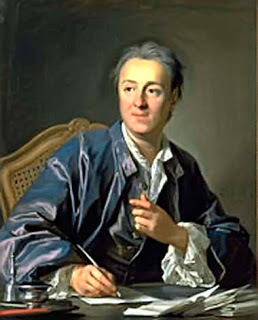 One of the side effects of being a writer (or is it a cause?) is a fascination with words. A few years ago, I wrote about my discovery that there is actually a name-- the Diderot Effect--for a phenomenon I'd observed but never knew had a label. I felt a similar sense of ah-ha elation when I stumbled upon what is known as the Baader-Meinhof Phenomenon.
One of the side effects of being a writer (or is it a cause?) is a fascination with words. A few years ago, I wrote about my discovery that there is actually a name-- the Diderot Effect--for a phenomenon I'd observed but never knew had a label. I felt a similar sense of ah-ha elation when I stumbled upon what is known as the Baader-Meinhof Phenomenon.The Baader-Meinhof Group was the original name of the Red Army Faction, a West German far-left militant group responsible for a number of terrorist acts in the 1970s especially. (Fun fact: in my previous life as an academic, I once edited a friend's master's thesis on post-World War II German far left groups.) But they're not very well known these days, which is how their name came to be attached to a phenomenon also known (less colorfully) as "frequency illusion."
 So what is it? Basically, it's a term used for the phenomenon in which something--a person, an idea, a word, whatever--that you'd never heard about suddenly seems to be everywhere, appearing again and again. Psychologists tell us it's the result of what they call "selective attention" (when you learn about a new thing, you start watching for it) and "confirmation bias" (so that each new exposure reinforces the impression that the new found thing is suddenly everywhere).
So what is it? Basically, it's a term used for the phenomenon in which something--a person, an idea, a word, whatever--that you'd never heard about suddenly seems to be everywhere, appearing again and again. Psychologists tell us it's the result of what they call "selective attention" (when you learn about a new thing, you start watching for it) and "confirmation bias" (so that each new exposure reinforces the impression that the new found thing is suddenly everywhere).So how did this phenomenon end up with the name "Baader-Meinhof phenomenon"? Evidently back in the 90s, some online commenter at the St. Paul Pioneer Press came up with the label after hearing about the B-M Gang twice in one day. From there it spread.
And now we can all watch to see how many times the term suddenly appears in our lives.
Published on June 28, 2015 10:49
June 24, 2015
WHEN FALCONS FALL Cover Reveal!
Yes, I'm home from London, jetlagged, footsore, and worried by some serious reorganization going on over at the House of Random Penguins. BUT..... Here's the cover for the new book! Coming March 2016:

So what do you think?
Here's the cover copy (which I may have posted before, but I'm too jetlagged to remember):
The tragic death of an enigmatic young stranger draws Sebastian St. Cyr and his wife, Hero, into a perilous tangle of passion and intrigue in this breath-taking new mystery from the “best historical thriller writer in the business.” [Lisa Gardner]
Ayleswick-on-Teme, 1813. Sebastian St. Cyr, Viscount Devlin, has come to this seemingly peaceful Shropshire village to honor a slain friend and on a quest to learn more about his own ancestry. But when the body of a lovely widow is found on the banks of the River Teme, a bottle of laudanum at her side, the village’s inexperienced new magistrate turns to St. Cyr for help.
Almost immediately, Sebastian realizes that Emma Chance did not, in truth, take her own life. Less easy to discern is exactly how she died, and why. For as Sebastian and Hero soon discover, Emma was hiding both her true identity and her real reasons for traveling to Ayleswick. Also troubling are the machinations of Lucien Bonaparte, the estranged brother of the megalomaniac French Emperor Napoleon. Held captive under the British government’s watchful eye, the younger Bonaparte is restless, ambitious, and treacherous.
Sebastian’s investigation takes on new urgency when he discovers that Emma was not the first, or even the second, beautiful young woman in the village to die under suspicious circumstances. Home to a haunting, ruined monastery, Ayleswick reveals itself to be a dark and dangerous place of secrets that have festered among the villagers for decades—and a violent past that may be connected to Sebastian’s own unsettling origins. And as he faces his most diabolical opponent ever, he is forced to consider what malevolence he’s willing to embrace in order to destroy a killer.

So what do you think?
Here's the cover copy (which I may have posted before, but I'm too jetlagged to remember):
The tragic death of an enigmatic young stranger draws Sebastian St. Cyr and his wife, Hero, into a perilous tangle of passion and intrigue in this breath-taking new mystery from the “best historical thriller writer in the business.” [Lisa Gardner]
Ayleswick-on-Teme, 1813. Sebastian St. Cyr, Viscount Devlin, has come to this seemingly peaceful Shropshire village to honor a slain friend and on a quest to learn more about his own ancestry. But when the body of a lovely widow is found on the banks of the River Teme, a bottle of laudanum at her side, the village’s inexperienced new magistrate turns to St. Cyr for help.
Almost immediately, Sebastian realizes that Emma Chance did not, in truth, take her own life. Less easy to discern is exactly how she died, and why. For as Sebastian and Hero soon discover, Emma was hiding both her true identity and her real reasons for traveling to Ayleswick. Also troubling are the machinations of Lucien Bonaparte, the estranged brother of the megalomaniac French Emperor Napoleon. Held captive under the British government’s watchful eye, the younger Bonaparte is restless, ambitious, and treacherous.
Sebastian’s investigation takes on new urgency when he discovers that Emma was not the first, or even the second, beautiful young woman in the village to die under suspicious circumstances. Home to a haunting, ruined monastery, Ayleswick reveals itself to be a dark and dangerous place of secrets that have festered among the villagers for decades—and a violent past that may be connected to Sebastian’s own unsettling origins. And as he faces his most diabolical opponent ever, he is forced to consider what malevolence he’s willing to embrace in order to destroy a killer.
Published on June 24, 2015 09:13
June 9, 2015
Off to London!
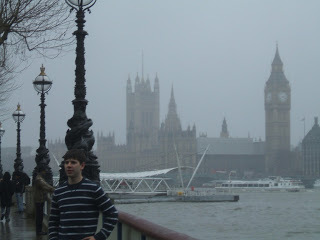 I'm off to London for the next two weeks. I'm taking my younger daughter, Danielle, with me. Steve gets to stay home and take care of the cats.
I'm off to London for the next two weeks. I'm taking my younger daughter, Danielle, with me. Steve gets to stay home and take care of the cats.I must admit that after what happened to Indie while I was on my book tour, I'm going to worry about my old guys while I'm gone. Huck is 14 1/2 but hasn't been well for the last two years; Nora just turned 15: Angel is 16 1/2 and failing; and Thomasina is at least 17 and may be as much as 18 or 19. So fingers crossed they'll be okay.
I used to go to England several times a year but haven't been since before I started writing the Sebastian St. Cyr series. This trip is all about Sebastian, with my list of "must see" places including such obscure sites as St. Helens Bishopsgate and the corner of Brook and Davies Streets. Expect lots of pictures when I get back!
Published on June 09, 2015 08:21



